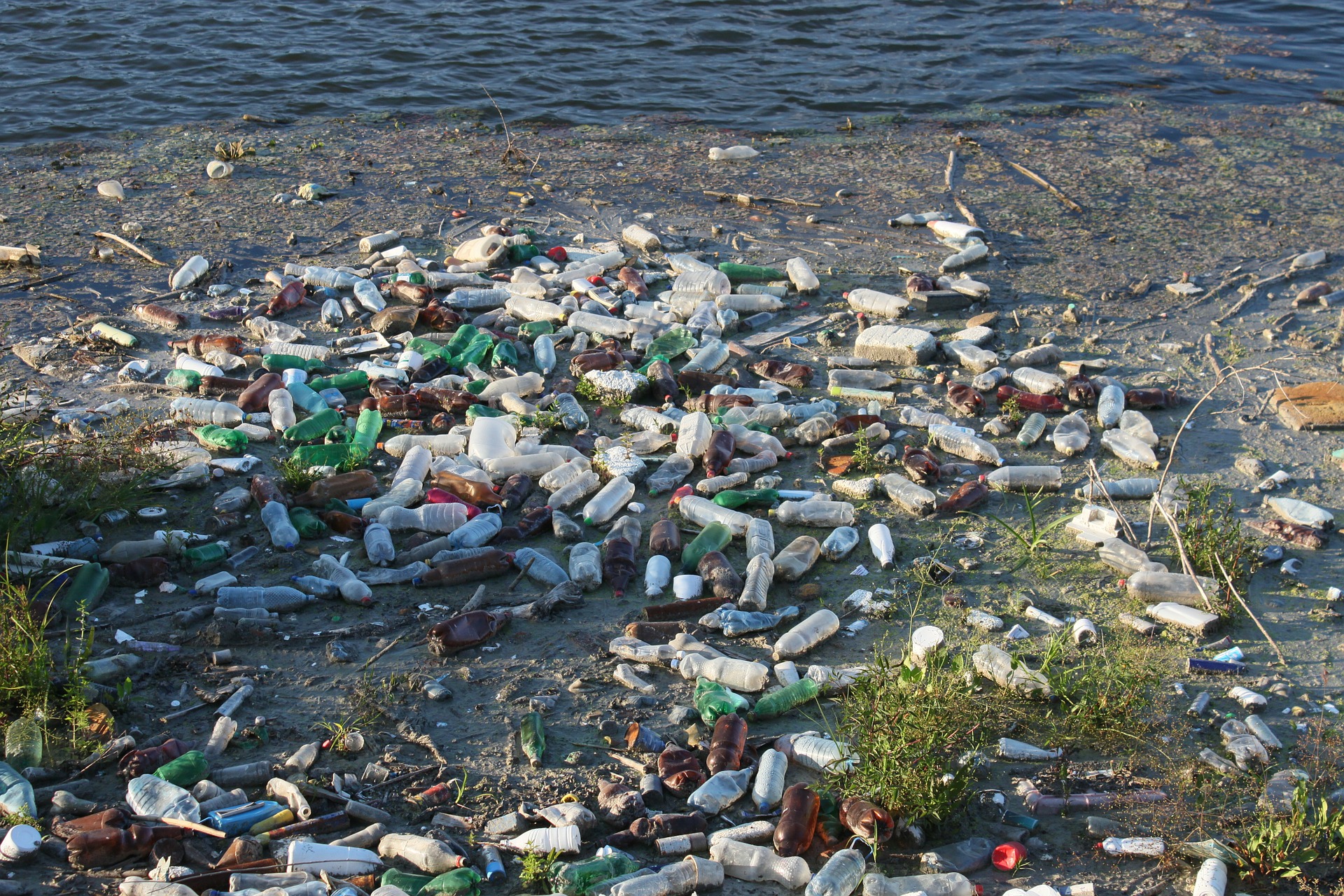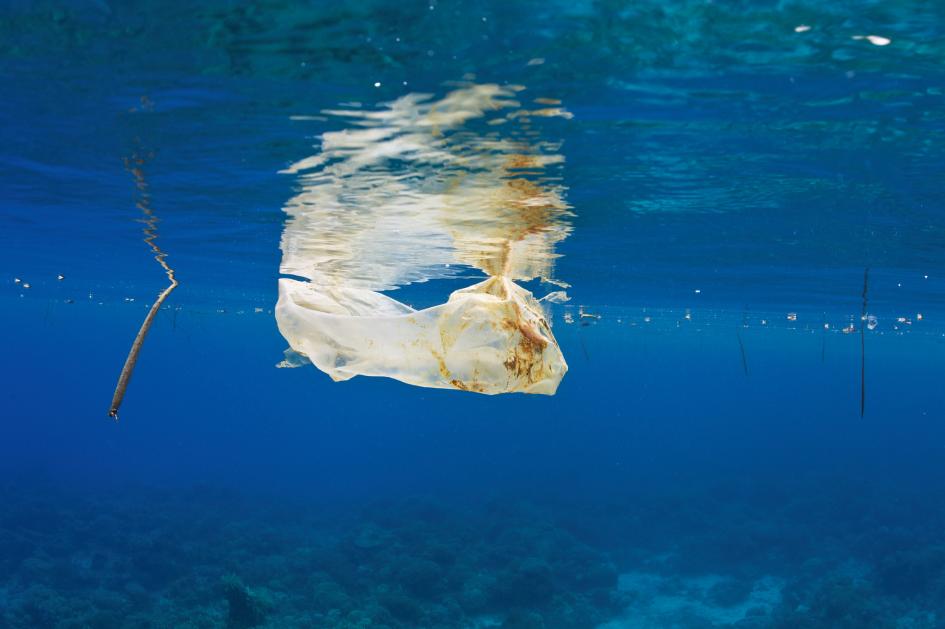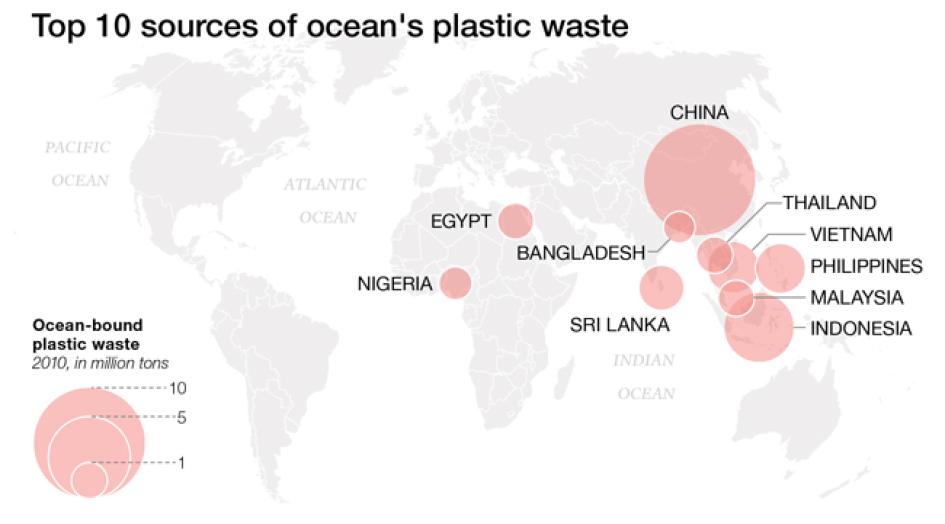
Eight Million Tons of Plastic Dumped in Ocean Every Year
Source:nationalgeographic.com
A plastic bag floats in the sea off the Philippines. Ocean plastic has turned up literally everywhere. It has been found in the deep sea and buried in Arctic ice.
Photograph by Keith A. Ellenbogen, AP
Scientists have come up with a new way to measure ocean trash—and the numbers are even worse than thought.
In 2010, eight million tons of plastic trash ended up in the ocean from coastal countries—far more than the total that has been measured floating on the surface in the ocean’s “garbage patches.”
That’s the bad news. The even worse news is that the tonnage is on target to increase tenfold in the next decade unless the world finds a way to improve how garbage is collected and managed.
The findings are part of a groundbreaking study published Thursday in Science that for the first time quantifies how much garbage flows into the world’s oceans every year.
Until now, most efforts to measure ocean debris have involved sample counts of plastic floating on the surface in large garbage patches in each of the world’s oceans. A study last year, for example, estimated the amount of floating trash to be 245,000 tons at most.
Worst Offenders
The new study also identifies the major sources of plastic debris and names the top 20 countries generating the greatest amount of ocean-bound trash. China is first. The United States is 20th. The rest of the list includes 11 other Asian countries, Turkey, five African countries, and Brazil.
The rankings in this chart reflect the largest total amounts of plastic waste flowing into the oceans annually, not the highest per capita amounts. For example, Bangladesh ranks 10th overall, with 867,879 tons, but 187th per capita, at 346 pounds per person. Denmark ranks 143rd overall with 1,974 tons, but 19th per capita, at 1,883 pounds per person.
NG Staff; J. L. Wang. Source: Science
Even though the United States has a highly developed garbage collection system, it nevertheless made the top 20 for two reasons: It has a large, dense coastal population and, as a wealthy nation, is a large consumer of products. (See video: “Are You Eating Plastic for Dinner?“)
“What we have done is look at the other side of the equation—what’s coming out of the faucet, rather than what’s already in the bathtub,” says Kara Lavender Law, an oceanographer at the Sea Education Association in Woods Hole, Massachusetts, and a co-author of the report.
“The size of the discrepancy is huge—20 to 2,000 times more than the range of estimates of floating debris. That is pretty shocking, especially when you consider that the amount going into the ocean in a single year and what we’re counting in the oceans has been going in for 50 years.”
To make the figure eight million tons comprehensible, Jenna Jambeck, the University of Georgia environmental engineer who led the study, likens it to lining up five grocery bags of trash on every foot of coastline around the globe.
“And by 2025, those five grocery bags of plastic are going to be ten bags,” she says.
That would be 155 million tons a year if present garbage management practices remain the same.
Plastic, Plastic Everywhere
Jambeck and her team combined population and economic data from 192 coastal countries bordering the Atlantic, Pacific, and Indian Oceans in addition to the Black and Mediterranean Seas. They found that these countries created 275 million tons of garbage annually, of which 4.8 to 12.7 million tons of plastic flowed into the oceans. That’s only 2 to 5 percent of the total waste created in those countries.
The use of plastics for consumer products has become increasingly dominant, and production has steadily increased since the material was first put into wide use a half century ago. In 2012, for example, 288 million tons of plastic were manufactured globally.
Ocean plastic has turned up literally everywhere. It has been found in the deep sea and buried in Arctic ice. It has been ingested with dire consequences by some 700 species of marine wildlife.
The pioneering study also creates a new mystery. Because the gap between what is found floating and what flows into the ocean is so large, scientists now have to figure out where else it collects and in what amounts.
“What we need to do now is close the gap,” Richard Thompson, a marine biologist at the U.K.’s Plymouth University.


